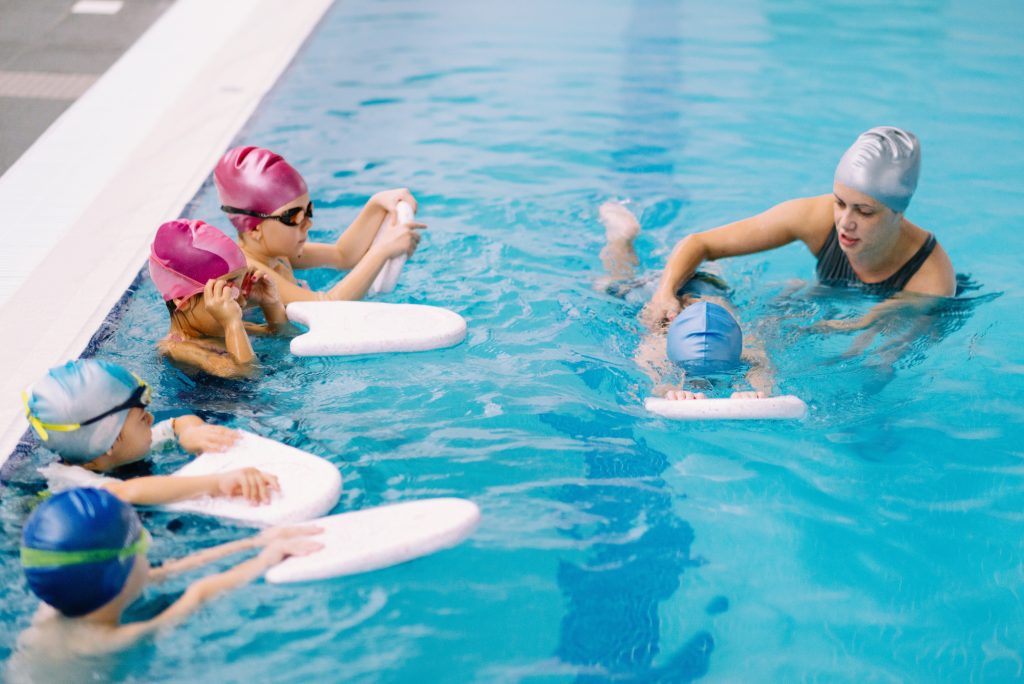In the bustling whirlwind of modern life, screens have become many children’s constant companions. Hence, it’s crucial to recognize the importance of physical activity and well-being for your little ones.
The journey toward a healthier and happier life begins in childhood, and one of the most enjoyable methods of embracing this lifestyle is through swimming. This article will explore the many advantages of swimming for kids, safety considerations, and ways to create an unforgettable and fun swimming experience for your children.
Benefits Of Swimming For Kids
1. Physical Benefits
When it comes to fostering your child’s physical health, swimming reigns supreme. Swimming lessons provide a full-body workout that guarantees better cardiovascular health and helps bolster strength and flexibility. As your child glides through the water, their muscles work harmoniously, building strength and endurance. These fundamental advantages lay the groundwork for a lifetime of physical well-being.
2. Mental Benefits
Apart from the physical benefits, swimming also offers mental advantages. Regular swimming sessions instill a sense of achievement in children, enhancing their self-assurance. The serene pool setting serves as a stress reliever, promoting relaxation and mental wellness. Additionally, research has indicated that swimming may enhance cognitive function, making it a valuable activity to improve academic performance.
3. Social Benefits
Swimming is a communal activity that encourages teamwork, friendships, and healthy competition. Children learn to interact with their peers, cooperate in group activities, and build lasting friendships poolside. These social skills extend beyond the pool and provide valuable life lessons.
Safety Considerations For Kids In Swimming
Despite the benefits of swimming, prioritizing your child’s safety in and around water remains critically important. Here are some safety considerations you and every parent should embrace:
1. Proper Adult Supervision
The first line of defense in water safety is vigilant adult supervision. Maintain constant vigilance over your child in or around the pool, even when lifeguards are present. Designate a responsible adult to watch over your child, especially during group play.
2. Swim Lessons
Enrolling your child in swimming lessons is essential. Skilled instructors teach vital water skills, stroke techniques, and water safety knowledge. These lessons equip children with the confidence and competence to navigate aquatic environments safely.
3. Safety Equipment
Equip your child with appropriate safety gear, including life jackets or flotation devices, particularly if they are not proficient swimmers. If you have a pool at home, remember to secure the area with a fence and a locked gate to prevent unsupervised access.
4. Water Safety Awareness
Continue teaching your child to follow water safety guidelines, such as not running near the pool, not diving in shallow water, and always seeking permission before entering the water. Regularly reinforcing these guidelines helps them become second nature.
How To Make Swimming Fun For Kids
Making swimming a source of joy for your child is essential for sustaining their enthusiasm. Here are some tips to make swimming fun for them:
1. Engaging Pool Games
The absence of solid ground won’t stop children from playing. Introduce exciting pool games such as Marco Polo, underwater treasure hunts, or relay races. These activities not only entertain children but also develop their swimming abilities.
2. Incorporate Toys and Floats
Aquatic toys and colorful floats can turn an ordinary swimming session into an exhilarating underwater adventure. They’re not only fun accessories to play with in the water but tools to help inexperienced swimmers stay afloat.
3. Learning Tools
Use swimming accessories like arm floaties, foam noodles, and kickboards to enhance your child’s water confidence. These tools offer additional support and assist children to focus on refining their technique.
4. Positive Reinforcement
Create a supportive and encouraging environment where your child feels safe to explore the water at their own pace. No matter how small their efforts and achievements are, always praise them.
Implementing Swimming As Part Of A Child’s Fitness Routine
To ensure that swimming remains a consistent part of your child’s fitness routine, consider the following steps:
1. Set Achievable Goals
Work with your child to establish realistic swimming goals, such as mastering a particular stroke or achieving a specific swimming distance. Tracking their progress and celebrating their successes will maintain motivation.
2. Scheduled Sessions
Schedule regular swimming lessons or practice sessions based on your child’s age and ability. Consistent training will improve their fitness and further cultivate their skills. Consider joining your child in the pool to motivate and encourage them.
3. Balanced Lifestyle
Balance your child’s swimming activities with a healthy lifestyle through ample sleep and a nutritious diet to provide energy for their active bodies. Also, encourage them to stay hydrated as swimming is a taxing physical activity despite being in the water.
Swimming For Success
Swimming lessons present an extensive range of benefits for children, covering their physical, mental, and social well-being. By prioritizing safety, infusing fun into swimming, and including it in your child’s fitness regimen, you can guide them toward a healthier and more gratifying life.
Don’t hesitate to introduce your child to the fun and wonders of swimming. Start their aquatic adventure today and watch them flourish in and out of the water. It’s a decision you won’t regret, ensuring that well-being starts early and lasts a lifetime.

